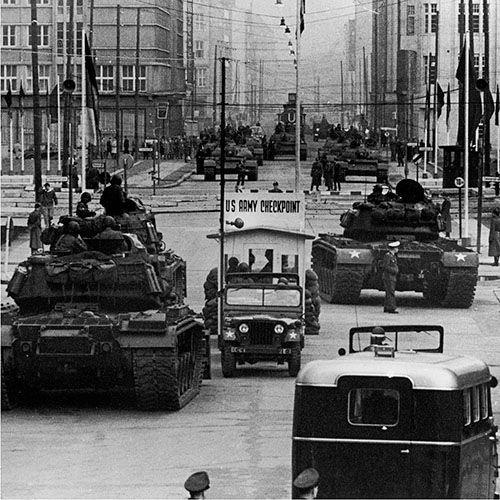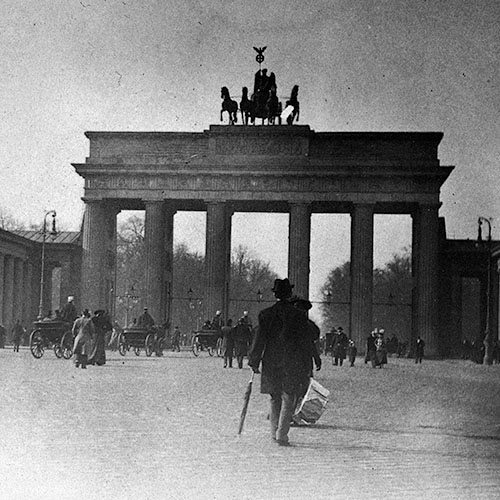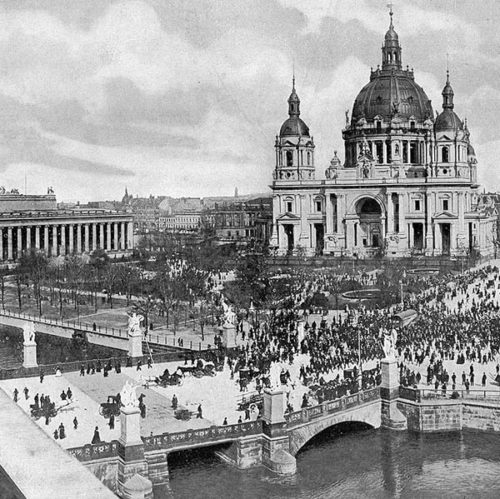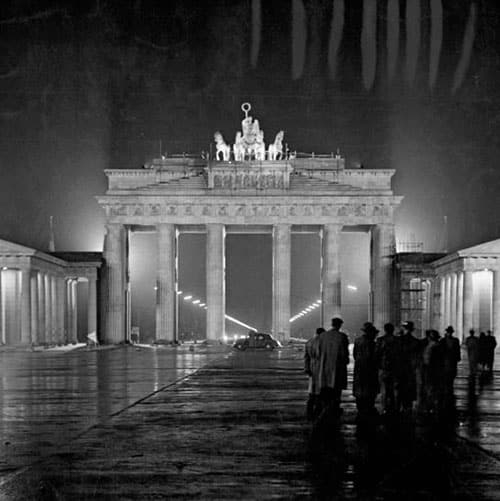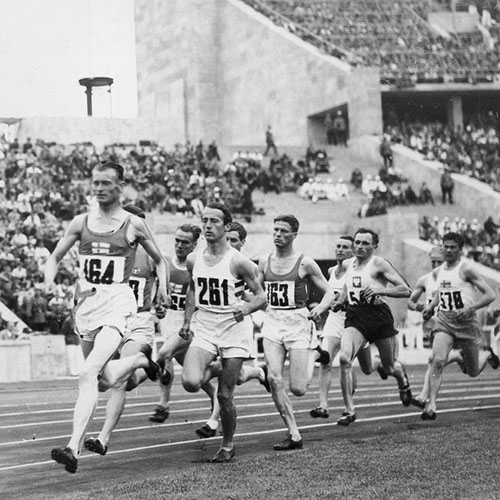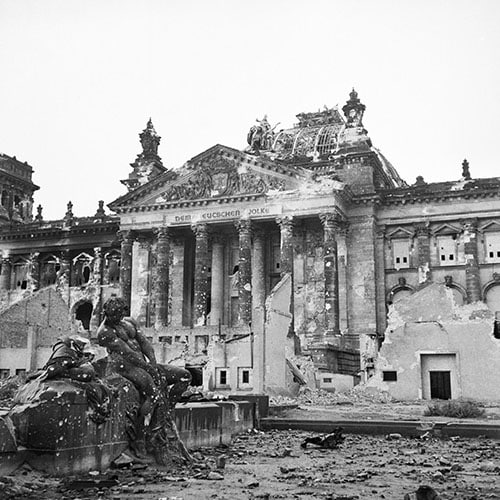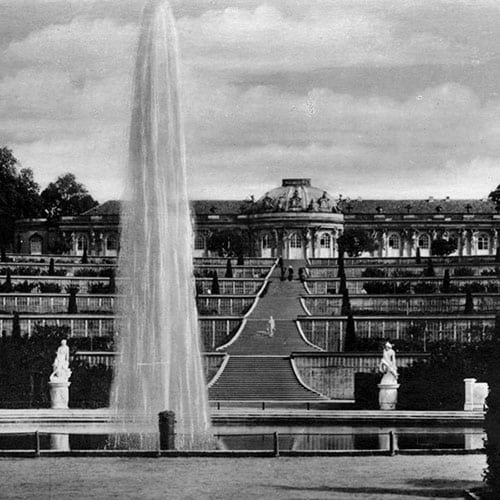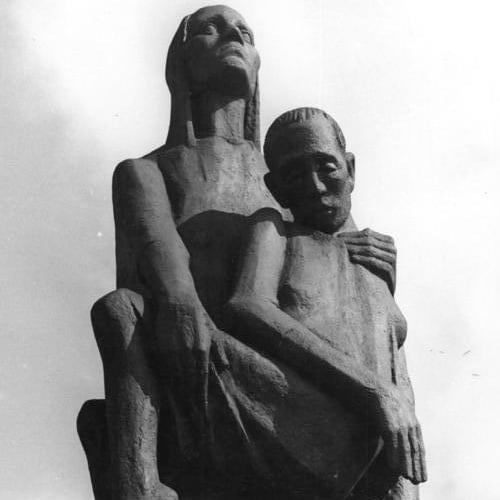“The notion of a Jewish Hitler… offers a satisfyingly ironic, even ‘literary’ explanation for the Holocaust. It seems to close the circle, to account for the unaccountable intensity of the hatred by rooting it in self-hatred.”
Ron Rosenbaum author of ‘Explaining Hitler: The Search for the Origins of His Evil’
In the ideological bedrock of the Third Reich, genealogy was not merely a matter of family history; it was an instrument of survival.
With the Nazi seizure of power in 1933, the production of an ‘Ahnenpass’ (Ancestral Passport) had become a bureaucratic necessity for millions of Germans, a document proving ‘Aryan’ purity and, by extension, the right to operate – and exist – within the new state.
Yet, arguably the most opaque lineage in the entire regime belonged to the new Chancellor himself.
While the machinery of the state demanded biological certainty from its citizens, Adolf Hitler’s own ancestry was marred by a significant documentary void—an illegitimacy in the generation of his father that left the door ajar for political exploitation.
This genealogical gap transformed from a private insecurity into a matter of historical record in 1946.
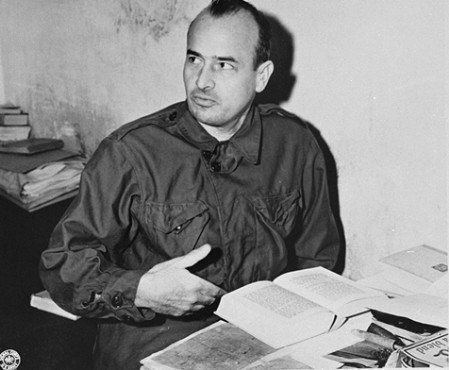
From a prison cell in Nuremberg, Hans Frank—formerly Hitler’s personal legal counsel and the Governor-General of occupied Poland—penned his posthumous memoir, Im Angesicht des Galgens (In the Face of the Gallows).
Within its pages, Frank detailed a clandestine assignment he claimed to have undertaken in 1930: a quiet investigation into the Führer’s origins, prompted by an alleged blackmail threat from Hitler’s half-nephew.
Frank’s conclusion was explosive.
He postulated that Maria Anna Schicklgruber, Hitler’s paternal grandmother, had been employed in the household of a Jewish family in Graz, the Frankenbergers, and that her illegitimate child was the product of this service.
If validated, this assertion would have categorized Adolf Hitler as a Mischling of the second degree under his own Nuremberg Laws, effectively dismantling the racial logic upon which his authority rested.

This specific allegation has since permeated the historical consciousness, often oscillating between sensationalist conspiracy and uncritical acceptance.
However, to treat Frank’s account as established fact is to misunderstand the evidentiary standards of history.
The durability of the ‘Jewish Hitler’ narrative relies less on archival proof and more on the irony it offers—a convenient psychological explanation for a tragedy that defies rationality.
To properly dissect this claim, we must leave behind the rumour mill of the Reich Chancellery and the Nuremberg cell to apply rigorous scrutiny to the provincial archives of nineteenth-century Austria, where the silence of the record speaks as loudly as the text itself.
–
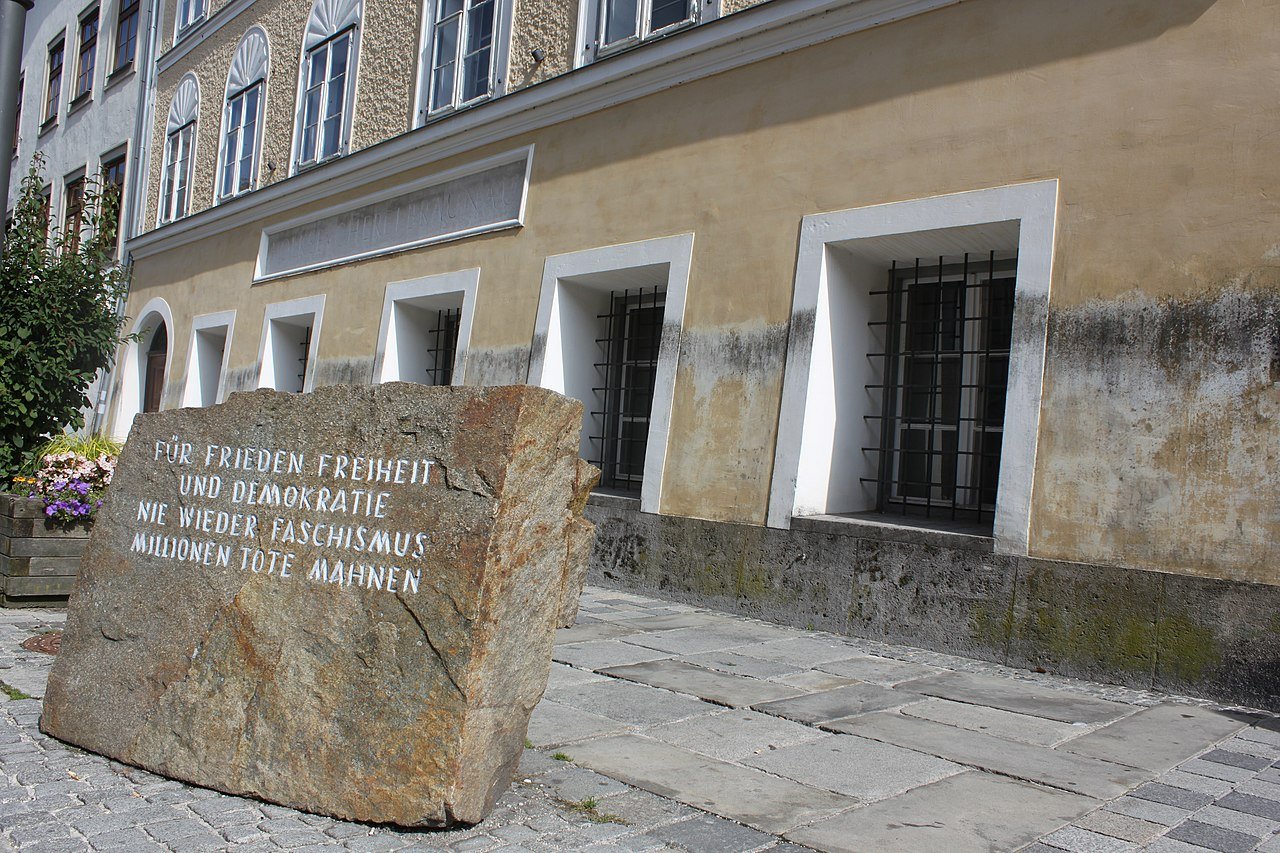
The Void In Hitler's Childhood
“I often had the impression that Adolf was at war with his own origins… He never spoke of his family with any affection, only with a dark, brooding silence.”
Hitler’s childhood friend, August Kubizek, from ‘The Young Hitler I Knew’
To understand why the rumor of Jewish ancestry could even take root, one must understand the sheer genealogical fog that surrounded Adolf Hitler’s origins.
He did not come from a lineage of well-documented nobility or established burghers.
He came from the Waldviertel—the ‘Wooded Quarter’ of Lower Austria.
In the 19th century, this was a region of poverty, superstition, and crushing isolation. It was a place of small villages, heavy silences, and rampant inbreeding among the peasant class. In this world, illegitimate births were not just common; they were a fact of life, often resulting from financial barriers to marriage.

Adolf Hitler was born on April 20th 1889, in Braunau am Inn, but the mystery begins half a century earlier.
His father, Alois Hitler, was born in 1837 in the hamlet of Strones, near the Austrian village of Döllersheim.
But Alois was not born ‘Hitler’.
Strones was very small at the time of Alois’s birth and did not even have a church with a baptismal registry.
He was baptised Alois Schicklgruber, the illegitimate son of a 42-year-old peasant woman named Maria Anna Schicklgruber.
On the baptismal register, the space for the father’s name was left blank.
“Illegitimate.”
This single blank space is the crack in the foundation where the myths would later fester. Maria Anna eventually married a man named Johann Georg Hiedler, but for reasons lost to history, Hiedler did not legitimize the boy during his lifetime.
Alois bore the ‘shameful’ name Schicklgruber until he was nearly 40 years old.
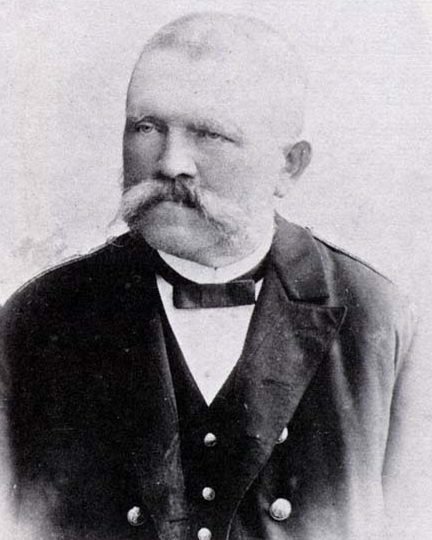
It wasn’t until 1876—long after Maria Anna and Johann Georg Hiedler were dead—that Alois, then a climbing customs official who wanted to secure an inheritance from his uncle (Johann Nepomuk Hiedler), went to the parish priest.
With three illiterate witnesses (and perhaps a bit of deception), he had the baptismal registry retroactively altered.
The priest crossed out “Illegitimate” and wrote in Johann Georg Hiedler as the father.

Perhaps due to a clerical error or a desire to standardise the spelling, ‘Hiedler’ became ‘Hitler’.
This bureaucratic sleight-of-hand turned Alois Schicklgruber into Alois Hitler. But socially, the whisper of his illegitimacy remained.
Even Adolf Hitler, in moments of rage, allegedly feared that his father’s unknown past would come back to haunt him.
It was the ultimate insecurity for a man obsessed with blood purity: his own family tree was a ‘Salzburg bottle’—shaken up, murky, and impossible to see clearly through.
It was this void—the missing father of 1837—that Hans Frank would fill with his explosive story in 1946.
–

The ‘Frankenberger Thesis’ - Hitler’s Jewish Blood?
“The indulgence normally accorded to a man’s origins is out of place in the case of Adolf Hitler, who made documentary proof of Aryan ancestry a matter of life and death for millions of people but himself possessed no such document. He did not know who his grandfather was. Intensive research into his origins, accounts of which have been distorted by propagandist legends and which are in any case confused and murky, has failed so far to produce a clear picture. National Socialist versions skimmed over the facts and emphasised, for example, that the population of the so-called Waldviertel, from which Hitler came, had been “tribally German since the Migration of the Peoples”, or more generally, that Hitler had “absorbed the powerful forces of this German granite landscape into his blood through his father”
Joachim C. Fest, author of ‘Hitler’
The core of the myth of Hitler’s Jewishness lies in what historians call the ‘Frankenberger Thesis’.
The story usually goes like this: In 1930, Hitler received a blackmail letter from his half-nephew, William Patrick Hitler (the son of his half-brother Alois Jr., living in England). William supposedly threatened to expose family secrets unless ‘Uncle Adolf’ set him up with a good job.
According to Hans Frank’s memoirs, Hitler summoned his lawyer and said, “This brat is claiming I have Jewish blood.”
He ordered Frank to investigate the claim confidentially.
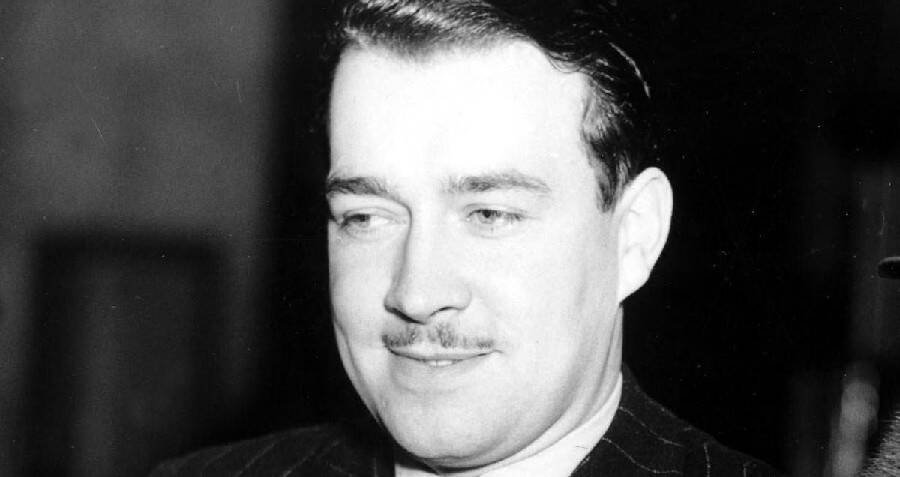
Frank claimed he went to Styria in Autria, checked the records, and reported back a devastating finding:
- That in 1836-1837, Hitler’s grandmother, Maria Anna Schicklgruber, was working as a cook for a wealthy Jewish family in Graz named Frankenberger.
- That the family’s 19-year-old son had impregnated the 42-year-old Maria.
- That for years, the Frankenbergers paid alimony to Maria for the child (Alois, Hitler’s father), and that letters were exchanged acknowledging the paternity.
If true, this would make Adolf Hitler one-quarter Jewish.

It is a tantalising narrative.
It fits perfectly with the psychological profile of the ‘self-hating Jew’, a concept popularized in the 1930s by philosopher Theodor Lessing (who was eventually murdered by Nazis).
It suggests that Hitler’s fanatical antisemitism was a projection of his own self-loathing; that he sought externally to destroy the Jew because he sought to destroy the ‘impurity’ within himself.
Likely, the main reason why the story gained traction was because it came from the inside.
Frank was not a gossip columnist; he was the Reichsrechtsführer, the head of Nazi law. If anyone knew where the bodies were buried, it was him.
After the war, the rumour mutated further.
The Soviet NKVD, always eager to humiliate the fascists, promoted the idea.
Historical revisionists picked it up.
Today, it survives in the echo chambers of the internet as a ‘gotcha’ factoid.
It creates a neat, ironic ending to the horror of the Holocaust.
But history is rarely neat, and as we dig into the archives of Graz and the timeline of the 19th century, the Frank story dissolves like sugar in hot water.
–
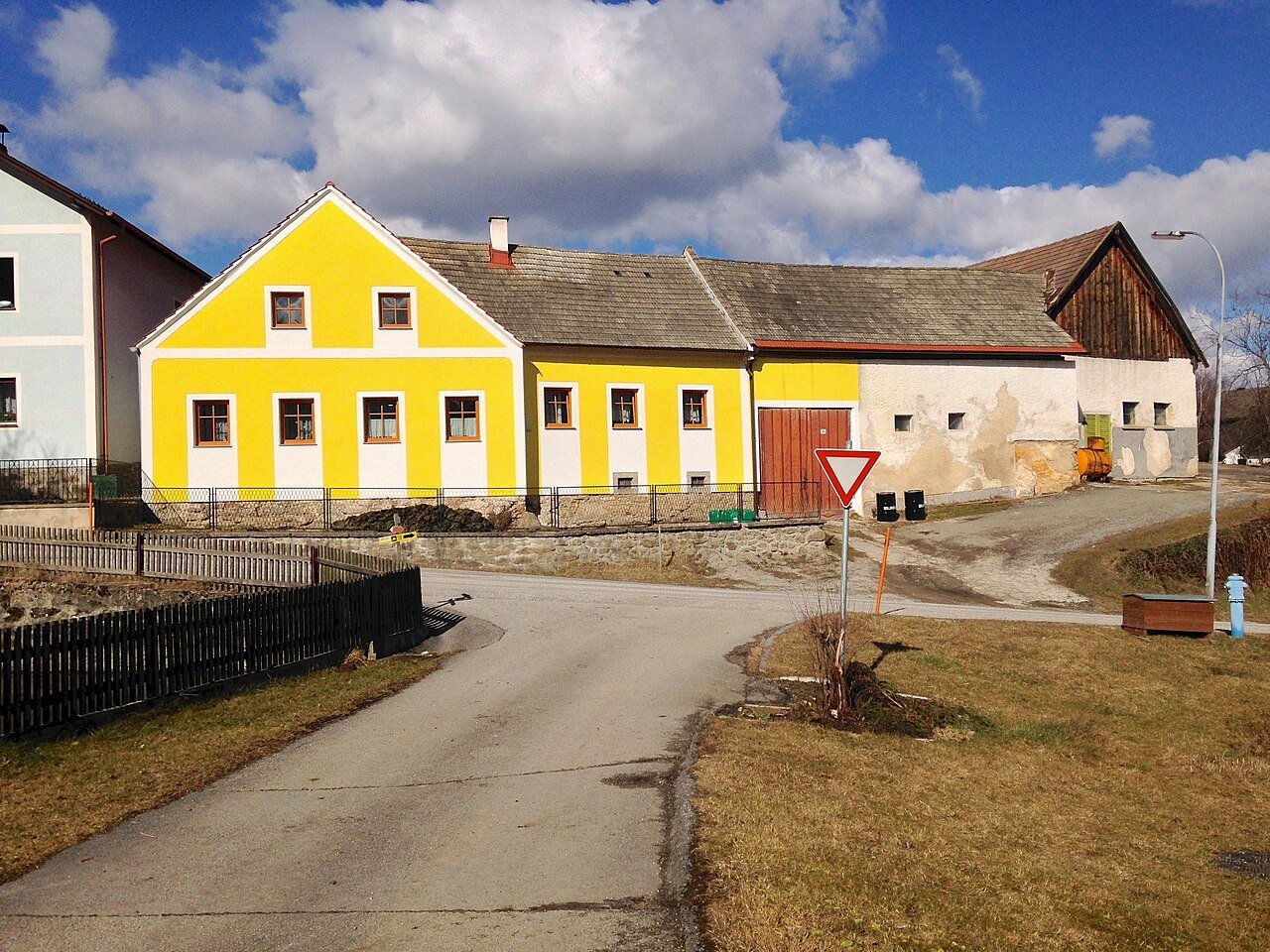
The Reality: Why the Jewish Hitler Myth is Impossible
“The legendary Jew from Graz is a product of fantasy… Adolf Hitler’s grandfather was, in all probability, Johann Georg Hiedler.”
Werner Maser, genealogical specialist and author of ‘Hitler: Legend, Myth and Reality’
Let’s be clear: No credible evidence exists to suggest Adolf Hitler had Jewish ancestry.
None.
And it is not just a matter of ‘we can’t find the papers’.
The specific claims made by Hans Frank have been systematically dismantled by historians like Brigitte Hamann, Ian Kershaw, and Richard J. Evans.
The evidence against the myth is overwhelming and geographic.
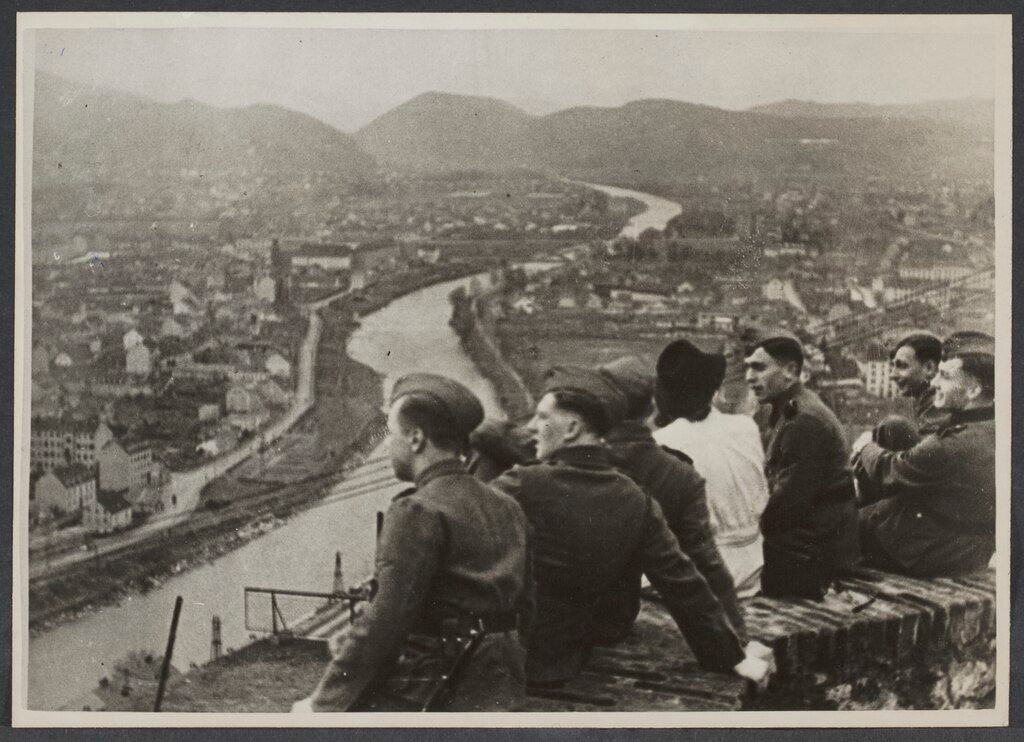
1. The ‘Jew-Free’ Graz
The most damning piece of evidence against Frank’s story is a boring, bureaucratic fact: Jews were expelled from Styria (including Graz) in the 15th century and were not allowed to return until the 1860s. As historian Brigitte Hamann details in her seminal work ‘Hitler’s Vienna’, there was no Jewish community in Graz in 1837 when Maria Schicklgruber became pregnant. Residence for Jews was strictly illegal. While a few might have visited for short-term trade fairs, no settled Jewish families existed there.
It wasn’t until the fundamental laws of 1867 that Jews were granted the right to settle permanently in Graz again—30 years after Hitler’s father was born. The idea of a wealthy, established Jewish household with a retinue of servants (and a teenage son engaging in illicit affairs) in 1837 Graz is historically impossible.
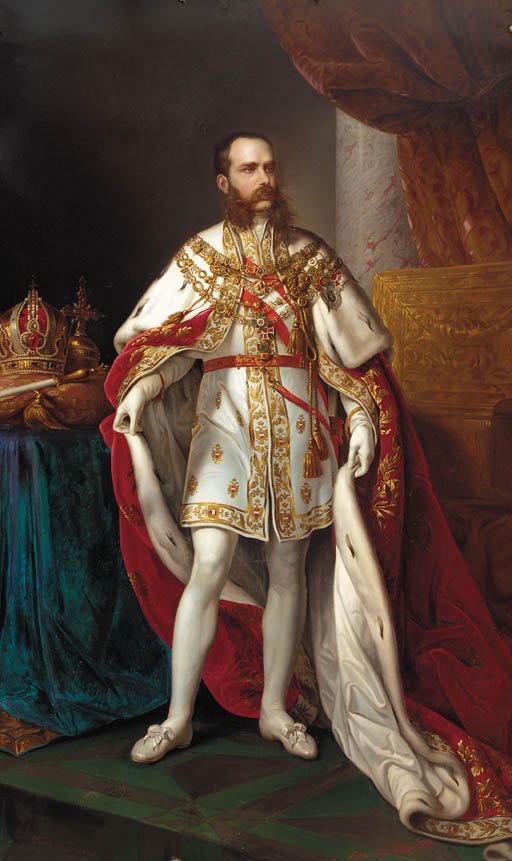
2. The Non-Existent ‘Frankenberger’
Researchers have scoured the archives of Graz looking for a ‘Frankenberger’. They found no one of that name—Jewish or Christian—living there in the 1830s.
There was a family named Frankenreiter living in Graz at the time, but they were Catholic, not Jewish. Even if one were to stretch the theory and say Frank got the name slightly wrong (Frankenreiter vs. Frankenberger), the dates still don’t match. The Frankenreiter son, Camille, would have been 10 years old when Hitler’s father was conceived—hardly a capable patriarch.
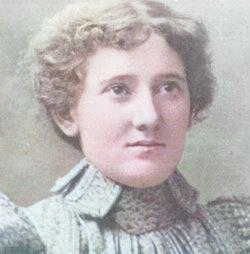
3. Maria Schicklgruber’s Whereabouts
There is no record of Maria Anna Schicklgruber ever working in Graz. She was a peasant woman from the Waldviertel. All documentary evidence places her in and around the village of Strones during this period. The leap that she traveled 200 kilometers south to a city where Jews were banned, found employment in a non-existent household, and then returned to the remote woods to give birth, is a fiction unsupported by a single scrap of paper.
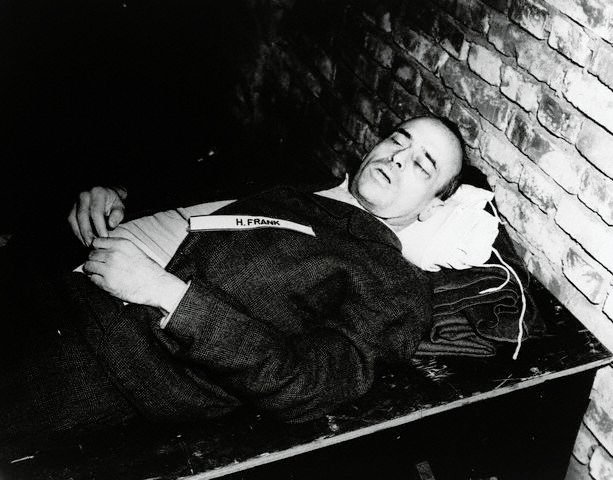
4. The Motivation of Hans Frank
So why did Hans Frank lie?
Ian Kershaw, in his biography Hitler: Hubris, suggests we look at the psychology of the man telling the story. Writing from his death cell, Frank had undergone a conversion to Catholicism. He was terrified of damnation. He hated Hitler by the end, blaming the Führer for leading Germany (and Frank himself) into the abyss.
Kershaw argues that the ‘Jewish Hitler’ story was a way for Frank to demonise Hitler further—to turn the arch-antisemite into a liar and a hypocrite. Alternatively, Frank might have simply believed a rumor he heard, uncritically, because in the chaos of 1946, facts mattered less than moral reckoning.
Or perhaps, Frank fell victim to the same anti-semitic thinking that pervaded the regime: the belief that such monumental evil must somehow be ‘foreign’. To a Nazi like Frank, admitting that a ‘pure’ German could cause such destruction was psychologically impossible. It had to be the result of ‘corrupt blood’.
In a twisted way, claiming Hitler was Jewish was Frank’s way of absolving ‘true’ Germans of ultimate guilt.
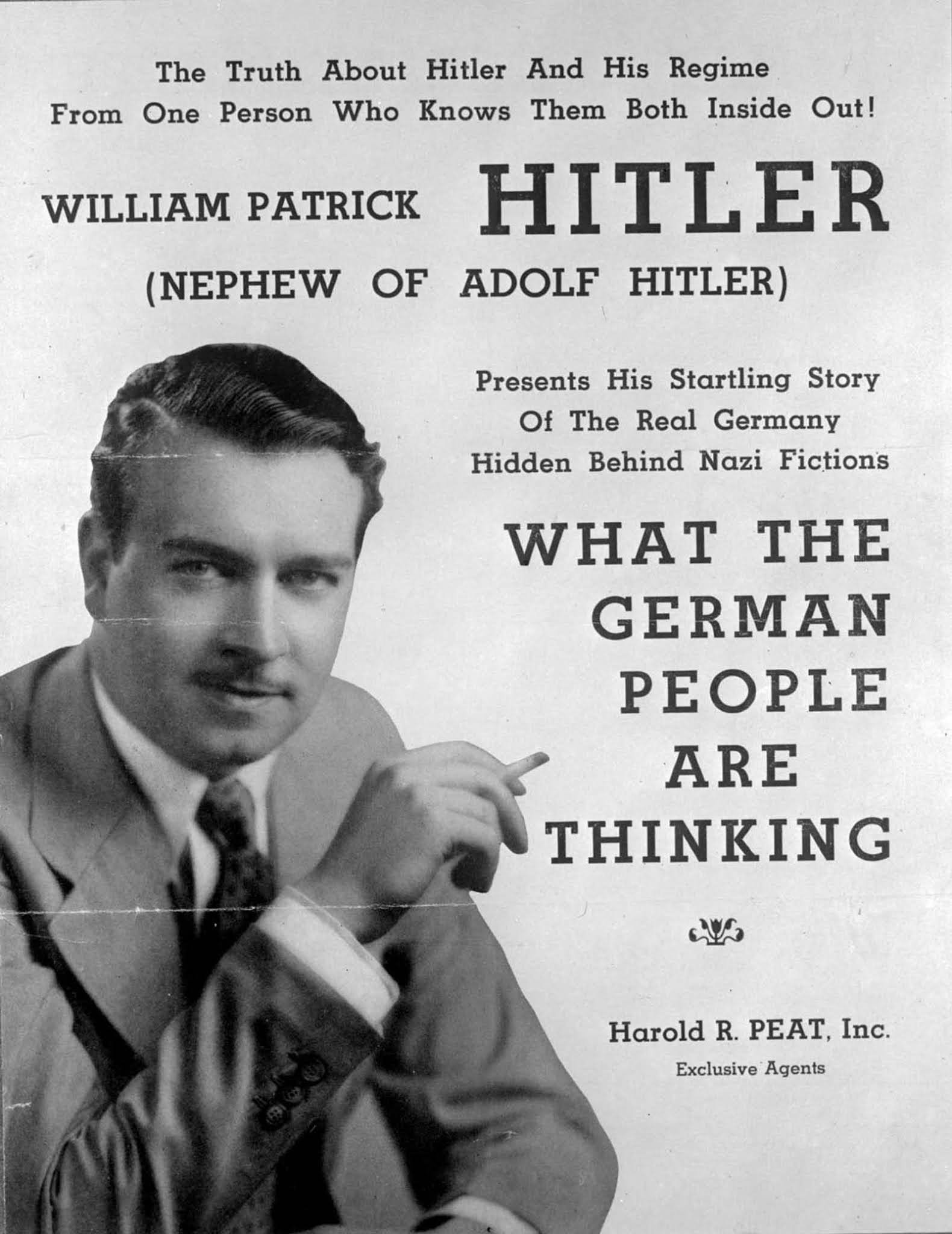
5. DNA Evidence (A Modern Postscript)
In 2010, a Belgian journalist and a historian attempted to analyze DNA from relatives of Hitler (specifically from the American branch of the family, descendants of William Patrick). They claimed to find a haplogroup (E1b1b) that is rare in Western Europe but common in North Africa and among Ashkenazi and Sephardic Jews.
Headlines screamed: “Hitler Related to Somalis and Berbers!” or “Hitler Was Jewish!”
However, geneticists quickly urged caution. While the haplogroup is common in Jewish populations, it is also found in Southern Europeans and isn’t a definitive marker of ‘Jewishness’ in a genealogical sense—especially not recent ancestry.
It dates back thousands of years. Finding a genetic marker common in the Mediterranean basin in an Austrian family is not proof of a Jewish grandfather in 1837; it’s just proof of the vast migration of humans over millennia.
It certainly doesn’t validate the specific Frankenberger story.
–

Conclusion
“Searching for Jewish ancestors in Hitler’s lineage acts as a deflection. It suggests that the destruction of European Jewry was a personal family feud writ large, rather than a systematic, ideological, and state-sponsored genocide.”
Peter Longerich; summary from ‘Hitler: A Biography’
So, was Adolf Hitler Jewish?
The answer – in response to the popular ‘Frankenberger Thesis’ – is an emphatic no.
The man who unleashed the Holocaust was not a ‘secret Jew’.
He was a catholic-born Austrian whose genealogy was typically messy for a region of rural poverty and illegitimacy.
The myth of the Jewish grandfather is not history; it is fake-news folklore. It survives because it is tempting. It offers a kind of poetic justice—a narrative hook that makes the senselessness of the Holocaust feel more like a Greek tragedy.
But as historians like Evans, Kershaw, and Hamann remind us, the truth is far more disturbing. Hitler wasn’t fighting his own blood. He was a man who, through a combination of political opportunism, cultural prejudice, and his own narcissism, propagated a worldview of hate.
He didn’t need a secret Jewish grandfather to become an antisemite. He only needed the toxic atmosphere of early 20th-century Vienna, a shattered post-war Germany, and a willingness to blame ‘the other’ for his own failures.
Accepting the reality—that he was just a man, with no secret lineage, who in large part chose to become a monster—places the burden of history back where it belongs: not on biology, but on human choice.
***
If you’ve enjoyed reading this article, consider booking one of our private guided tours of Berlin.
Bibliography
Corcos, A.F. The Myth of the Jewish Race: A Biologist’s Point of View. Michigan State University Press, 2005.
De Boer, Sjoerd‑Jeroen (2022). The Hitler Myths: Exposing the Truth Behind the Stories About the Führer
Ehrenreich, Eric (2007). The Nazi Ancestral Proof: Genealogy, Racial Science, and the Final Solution. Indiana University Press
Evans, Richard J. (2004). The Coming of the Third Reich. Penguin
Frank, Hans (1953). Im Angesicht des Galgens (In the Face of the Gallows). F. Schöningh
Gellately, Robert (2020). Hitler’s True Believers: How Ordinary People Became Nazis. Oxford University Press
Hamann, Brigitte (1999). Hitler’s Vienna: A Portrait of the Tyrant as a Young Man. Oxford University Press, ISBN 0195125371/978‑0195125375
Kershaw, Ian (1998). Hitler: 1889–1936: Hubris. W. W. Norton & Company, ISBN 0393046710/978‑0393320350
Kurlander, Eric (2017). Hitler’s Monsters: A Supernatural History of the Third Reich. Yale University Press
Patai, Raphael & Patai, Jennifer (1989). The Myth of the Jewish Race. Wayne State University Press
Rigg, Bryan Mark (2002). Hitler’s Jewish Soldiers: The Untold Story of Nazi Racial Laws and Men of Jewish Descent in the German Military. University Press of Kansas
Rosenbaum, Ron (1998). Explaining Hitler: The Search for the Origins of His Evil. Random House
Sandgruber, Roman (2021). Hitlers Vater: Wie der Sohn zum Diktator wurde. Molden
Toland, John (1976). Adolf Hitler. Doubleday
HISTORICAL ARTICLES
Mythbusting Berlin

Are There Any Nazi Statues Left In Berlin? – Mythbusting Berlin
Visitors to Berlin often arrive expecting to find the physical remnants of the tyranny of the 20th century still standing – statues of dictators, triumphal arches, or bronze idols. Instead, they often find none. The stone symbols and statues of the Third Reich are still gazing down on them, however, hiding in plain sight. But why are there no statues of Hitler? Did the Allies destroy them all in 1945, or is the truth stranger
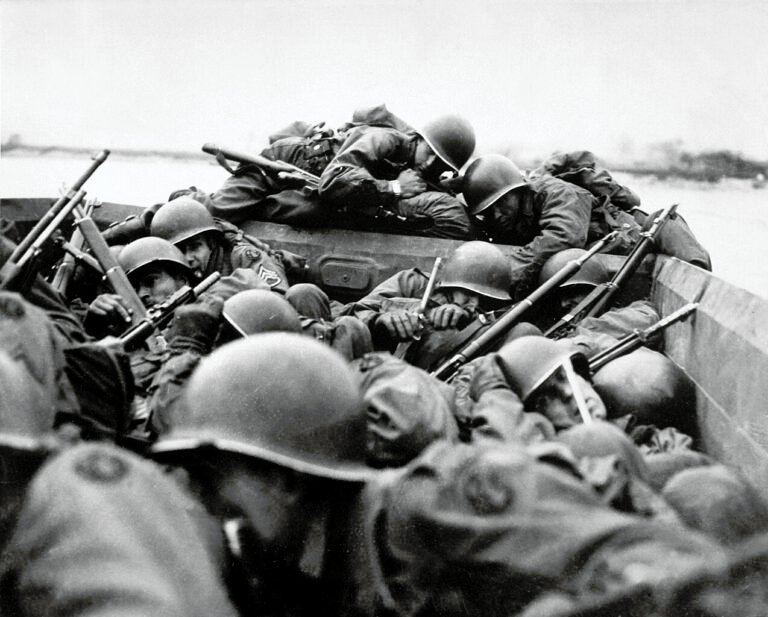
Could The Western Allies Have Captured Berlin? – Mythbusting Berlin
To contemplate a Western Allied capture of Berlin in 1945 is to challenge the established endgame of the Second World War. What was the true military and logistical feasibility of a Western Allied assault on the Nazi capital? What factors truly sealed Berlin’s fate, and what might have changed had the Allies pushed eastward?
Answering these questions means delving into the complex interplay of logistics, political maneuvering, and the competing visions for a post-war world
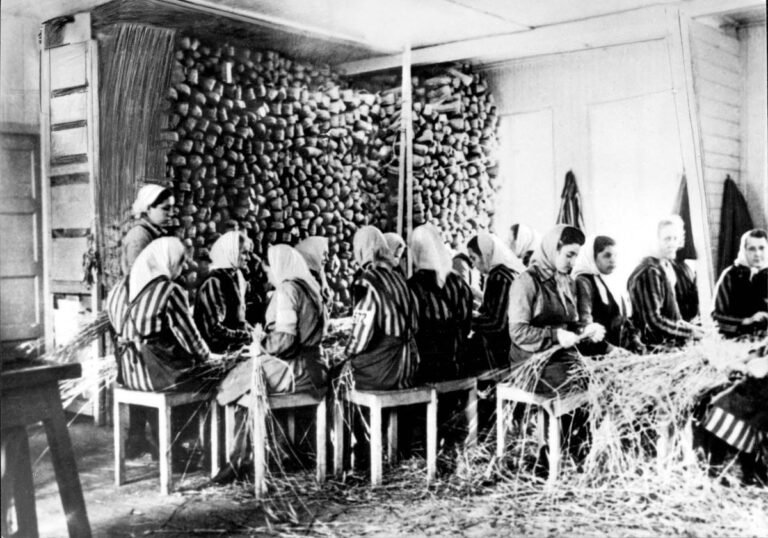
Did Any Of The Rothschild Dynasty Die In The Holocaust? – Mythbusting Berlin
The Rothschild name is synonymous with immense wealth, influence, and persistent conspiracy theories—especially during the era of Nazi Germany. Often targeted by antisemitic propaganda, the family’s survival during World War II has sparked myths about their supposed immunity from Nazi persecution. But did any Rothschild family member actually perish in the Holocaust? This article explores that compelling question, unraveling historical misconceptions and revealing the reality behind one of Europe’s most famous dynasties.
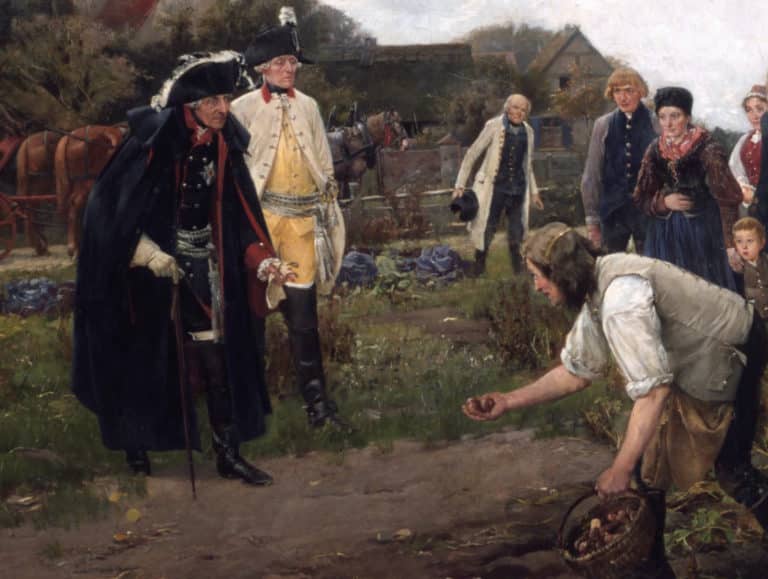
Did Frederick The Great Introduce The Potato To Germany? – Mythbusting Berlin
One of the more bizarre claims to fame attributed to the first King of Prussia is that the man who would go down in history known as Frederick the Great introduced the potato to Germany during his reign back in the 1700s. This starchy root vegetable has undoubtedly become a staple part of German cuisine – an essential addition to any plate of Schnitzel, Schweinshaxn, and Königsberger Klopse – however, whether Frederick the Great is
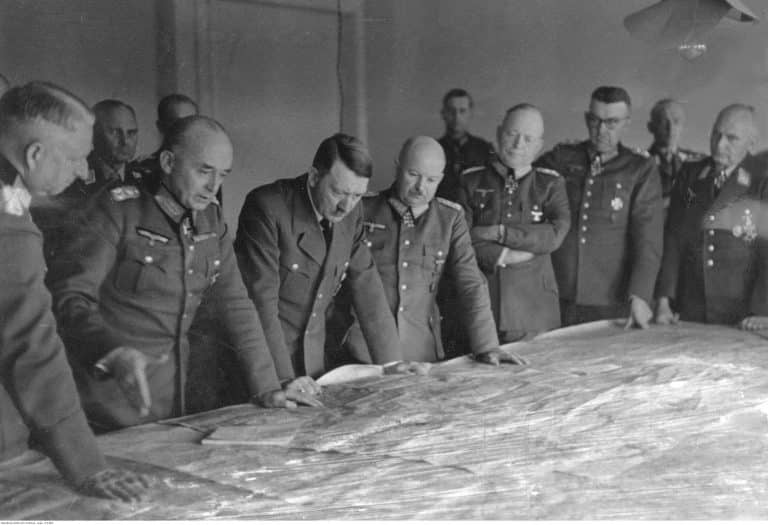
Did Hitler Escape To Argentina In 1945? – Mythbusting Berlin
Although Nazi leader, Adolf Hitler, certainly remains an inescapable figure, could there be any truth to the story of his escape to Argentina in 1945? That the most wanted man on earth could simply vanish, to spend the rest of his life peacefully in South American obscurity captivates imaginations. Yet, despite numerous investigations, this tale persists primarily as myth—fueled by speculation, hearsay, and conspiracy theories.
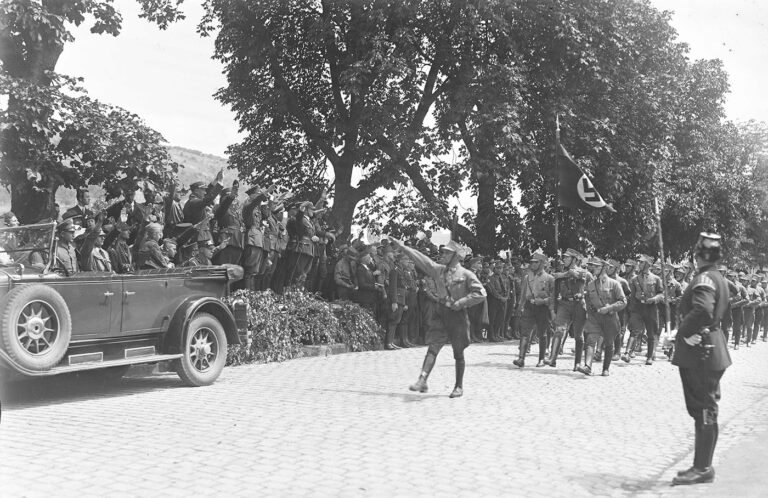
Did Hugo Boss Design The Nazi Uniforms? – Mythbusting Berlin
The idea that Hugo Boss – the man whose name now adorns expensive suits and fragrances – was the creative genius behind the Nazi uniforms suggests a terrifying collision of haute couture and holocaust – a marriage of high style and high crimes. The image is striking: a German tailor sketching the ultimate villain’s costume. But history, as usual, is far messier, more bureaucratic, and more banal than the internet memes suggest. To understand who
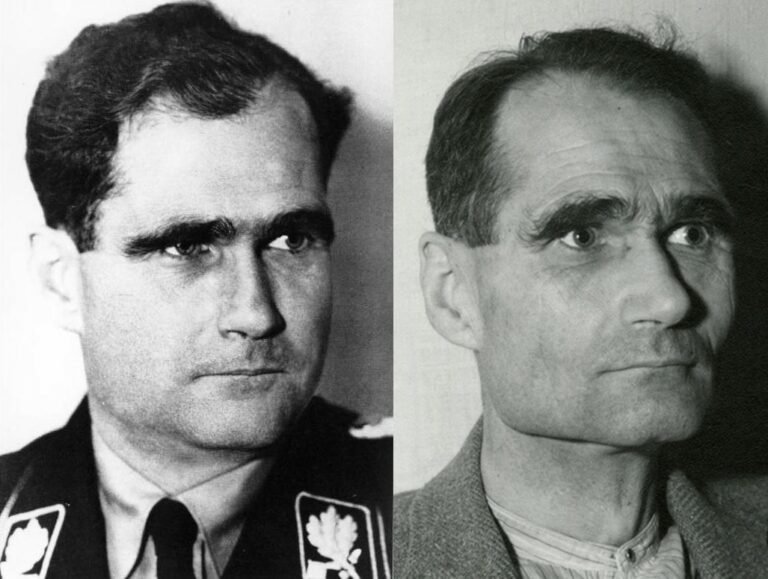
Did Rudolf Hess Really Commit Suicide? – Mythbusting Berlin
On a summer’s day in 1987, the last Nazi war criminal of the Nuremberg trials was found dead in a prison built for hundreds, yet for two decades, housed only him. The official verdict was suicide, a straightforward end to a life defined by fanaticism, delusion, and contradiction.
But the simplicity of the report belied the complexity of the man and the 46 years he had spent in Allied custody. In the meticulously controlled
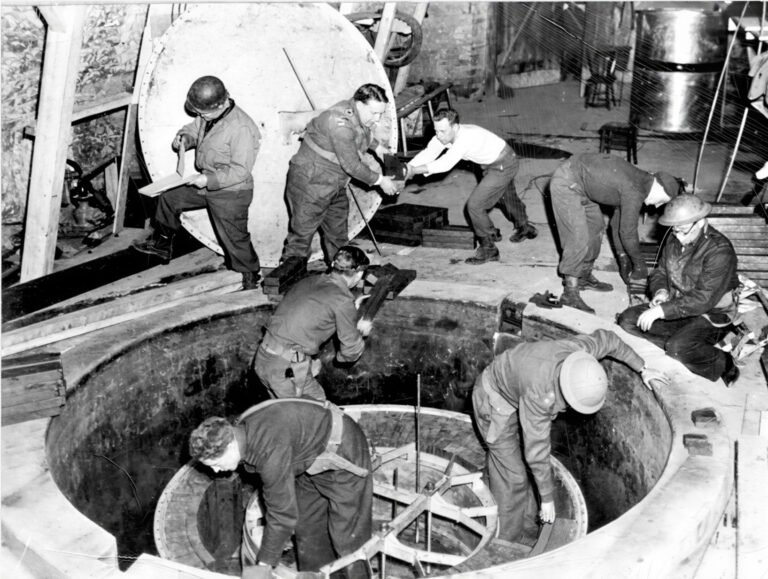
Did The Nazis Develop Nuclear Weapons? – Mythbusting Berlin
The Nazi obsession with super-weapons became so serious in the closing stages of the Second World that Adolf Hitler personally believed that such ‘Wunderwaffen’ both existed in a usable form – and would save the country from defeat. Had the Nazis managed to develop nuclear weapons by 1945 – the outcome of the war would surely have been different. But how close were Hitler, Himmler, and his henchmen to developing an A-bomb?

Did The Nazis Invent Decaf Coffee? – Mythbusting Berlin
Persistent rumors claim that Nazis preferred their coffee anything but pure, leading some to wonder if they might have influenced the development of decaffeinated coffee. Although decaf was already widely available across Europe by the mid-20th century, speculation continues: could the Nazis really have played a role in popularizing—or even discovering—this caffeine-free alternative, or is this simply another caffeinated conspiracy cooked up to sensationalize an ordinary historical detail?

Did The Nazis Invent The Bicycle Reflector? – Mythbusting Berlin
The fruits of wartime ingenuity are plenty – so many, in-fact, that it has become somewhat of a worn cliche that as the guns start firing the innovators get to work, often solving problems while providing more problems for the enemy to overcome.The kind of progress that results in the production of newer improved, more lethal weapons, such as to increase the chances of victory.
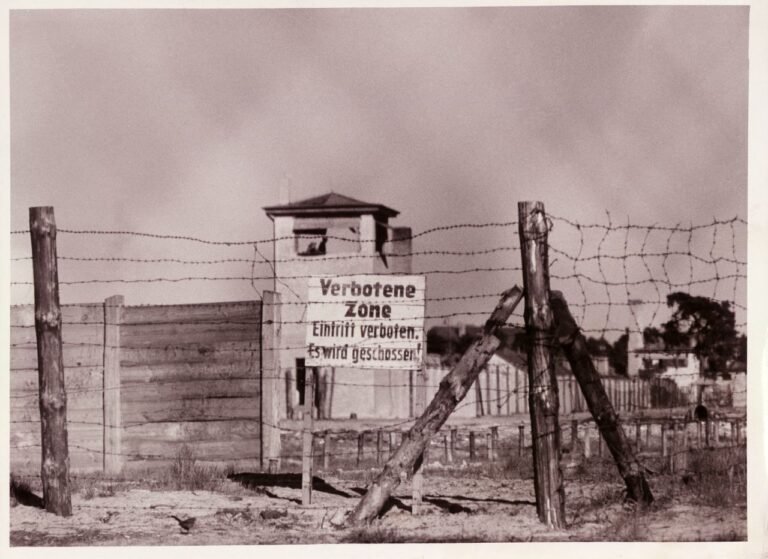
Did The Nazis Run The Largest Counterfeiting Operation In History? – Mythbusting Berlin
During the Second World War the Nazis masterminded an astonishing plot to destabilise Britain by flooding its economy with counterfeit banknotes. Crafted in secret by concentration camp prisoners, this forged fortune became the most ambitious counterfeiting operation ever attempted. But was it history’s largest? Dive into the extraordinary tale of Operation Bernhard,
rife with deception, survival, and intrigue—revealing the truth behind one of the Third Reich’s most audacious schemes and its surprising legacy.
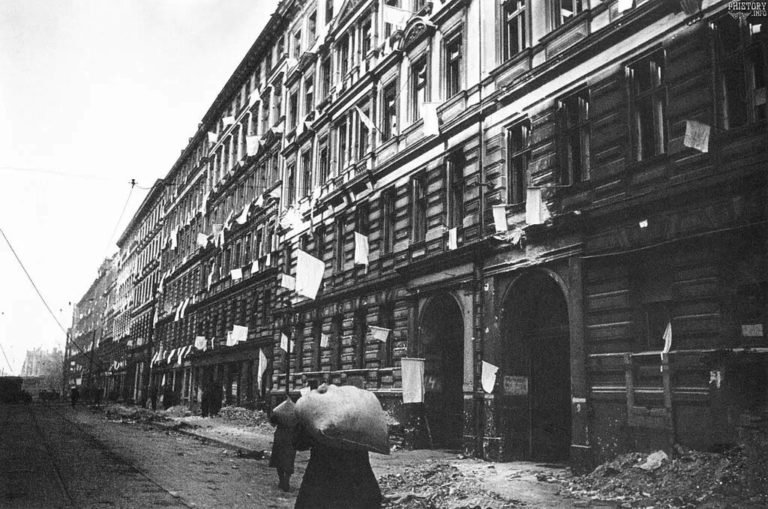
Did The Second World War End In Berlin? – Mythbusting Berlin
When is a war ever truly over? When the last shot is fired in anger would seem like the best measure. Rarely, though, is it possible to gain insight into such a moment.
Remarkably, a record still exists of such a moment at the end of the First World War on the Western Front. A seismic register and recording of the last belching battery of British guns firing artillery across no-man’s-land, followed by a profound
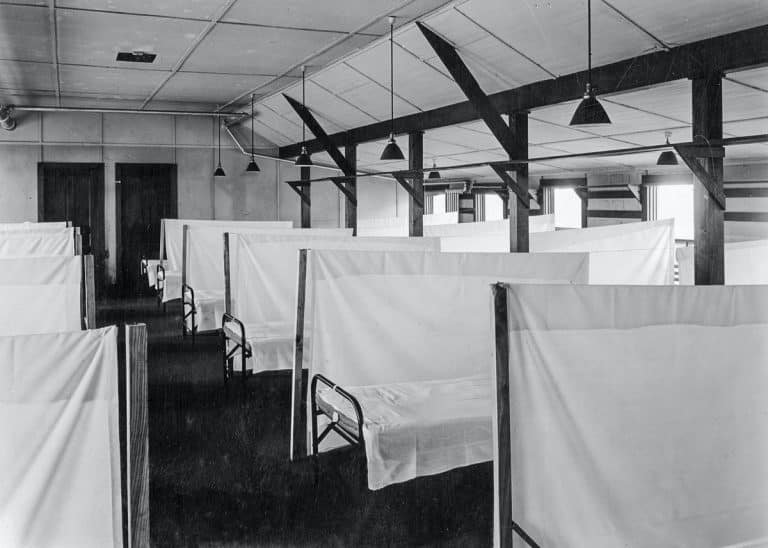
Did The Spanish Flu Pandemic Help The Nazis Take Power? – Mythbusting Berlin
The devastating Spanish Flu pandemic of 1918-1919 struck amid Germany’s post-war turmoil, compounding social instability, economic hardship, and widespread political disillusionment. Could this catastrophic health crisis have indirectly paved the way for Nazi ascension? While often overshadowed by war and revolution, the pandemic’s profound psychological and societal impacts arguably contributed to the perfect storm, enabling extremist ideologies—including Nazism—to gain popularity and ultimately seize power in a fractured Germany.

How Many Assassination Attempts On Adolf Hitler Were There? – Mythbusting Berlin
Nazi leader, Adolf Hitler, projected an aura of invincibility, a man of destiny shielded by providence. But behind the carefully constructed image of the untouchable Führer lies a story of constant threat, of bombs that failed to detonate, and errant bullets that missed their mark. Unearth the hidden history of the numerous attempts on Hitler’s life as we explore the courage of those who tried to change the course of history and the devil’s luck
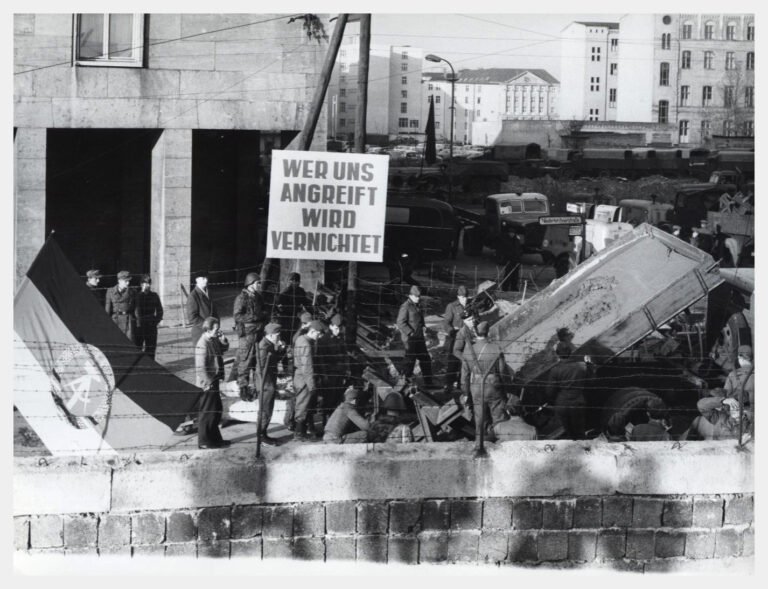
How Many People Died Trying To Escape East Germany? – Mythbusting Berlin
The image of the Berlin Wall is seared into our collective memory, a concrete symbol of Cold War oppression. We think of the daring escapes and the tragic deaths of those who failed. But that well-known number is only a fraction of the truth. The story of those who died trying to escape East Germany is far broader and more complex than most imagine, stretching along a thousand-kilometer border and out into the cold waters
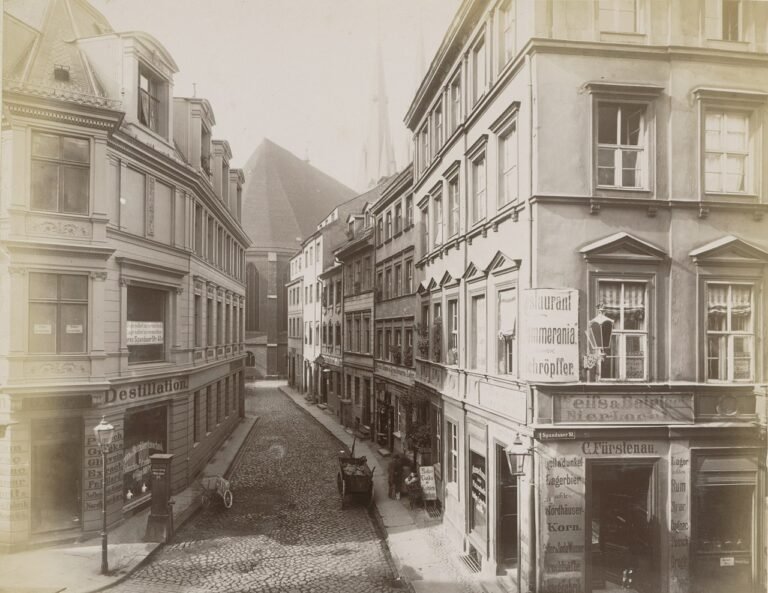
How Old Is Berlin? – Mythbusting Berlin
A relatively new arrival in Europe, Berlin is over 1000 years younger than London, nevermind Rome or Athens, Jerusalem or Jericho. Just how old is Berlin though?
A question fraught with false assumptions and distortions – that has more often than not been answered with propaganda as it has with the cold hard truth.
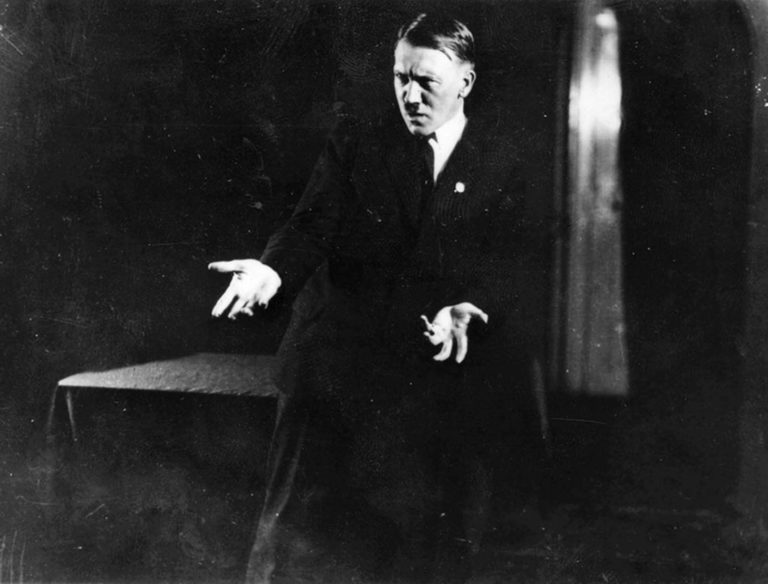
Was Adolf Hitler A Drug Addict? – Mythbusting Berlin
Solving the enigma of the ‘Führer’ has become a preoccupation for many, since the arrival of the Austrian-German onto the world stage – although moving beyond the mythology without falling into the trap of prejudically extrapolating on the psychopathography of Hitler or demonising so as to excuse his actions has proven problematic. What to make of the man who became more than the sum of his masks? The painter; the military dilettante, the mass murderer,

Was Adolf Hitler Gay? – Mythbusting Berlin
In the shadowy corridors of Third Reich history, few questions provoke as much tabloid curiosity and scholarly exasperation as the sexuality of Adolf Hitler. For decades, rumors have swirled—whispered by political enemies in 1930s Munich, psychoanalyzed by American spies in the 1940s, and sensationalized by revisionist authors today. Was the dictator who condemned thousands of men to concentration camps for “deviant” behavior hiding a secret of his own? By peeling back the layers of propaganda,
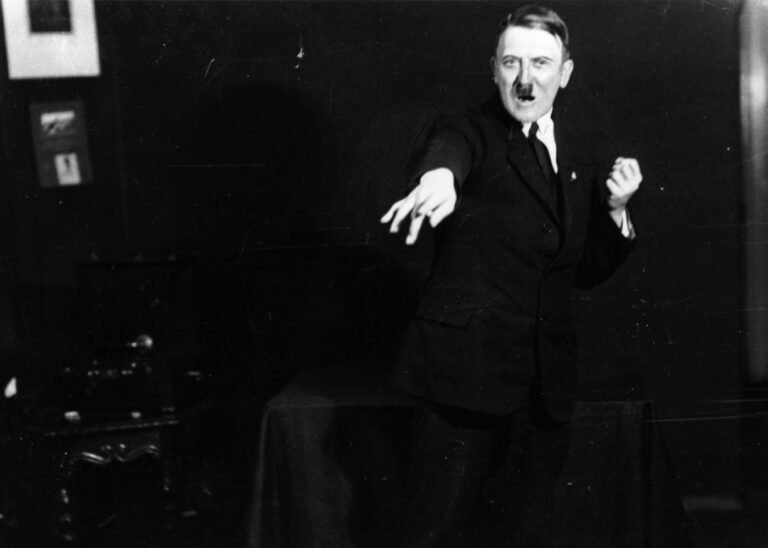
Was Adolf Hitler Jewish? – Mythbusting Berlin
Was the dictator who orchestrated the murder of millions of European Jews secretly one of them? It is perhaps the darkest irony imaginable, a story whispered for decades in backrooms, bars, and conspiracy forums alike. The most-common rumour – the ‘Frankenberger Myth’ – suggests that Adolf Hitler’s paternal grandfather was Jewish, a secret so damaging it could have unraveled the entire Nazi regime. But where does this claim come from? And, more importantly, is there
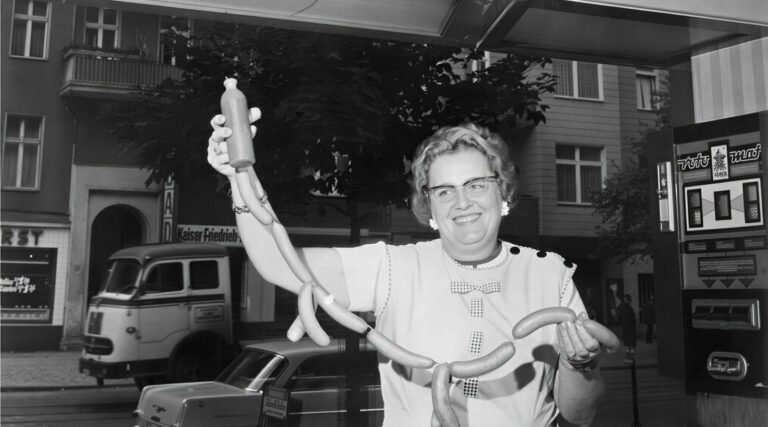
Was Currywurst Invented In Berlin? – Mythbusting Berlin
Explore the story behind what many consider Berlin’s most iconic snack—the ever-so-humble Currywurst. Often hailed as an enduring symbol of culinary creativity amid Cold War scarcity, this humble dish has inspired fierce debate about its true origin. But was it genuinely invented here in Berlin, or have proud locals simply adopted and elevated this spicy street-food favorite into legendary status all their own?

Was Fanta Invented By The Nazis? – Mythbusting Berlin
As one of the most secretive organisations in the world, the Coca Cola corporation refuses to share its secret recipe with anyone. Famously insisting only on shipping the base syrup of its drinks to plants around the world to be carbonated and distributed.
This combined with the trade limitations of the Second World War may have led to the introduction of one of the most popular soft-drinks in the world. But could it be true:
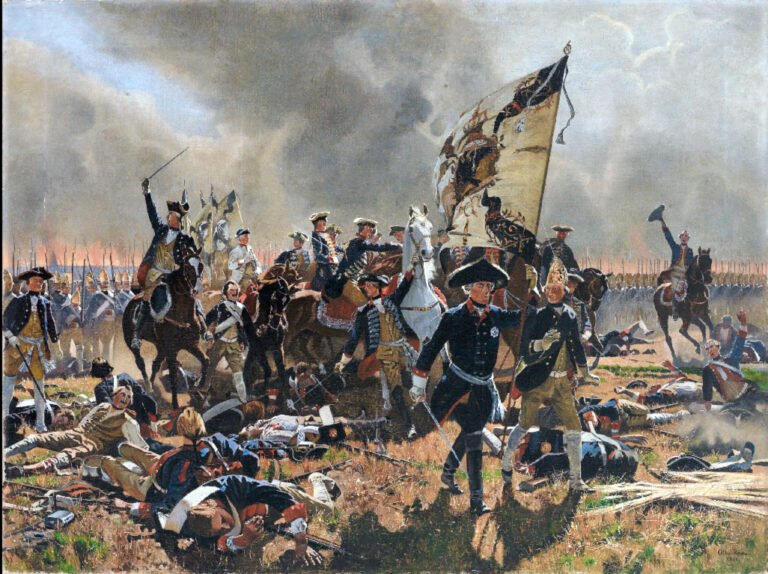
Was Frederick The Great Gay? – Mythbusting Berlin
Frederick II of Prussia, better known as Frederick the Great, is often remembered as the archetypal enlightened monarch – a brilliant military commander, patron of the arts, and learned philosopher. Yet behind the stern portraits of this 18th-century warrior-king lies a personal life long shrouded in intrigue and speculation. Intrigue around the king’s sexual orientation has persisted through the centuries, chiefly revolving around one question: Was Frederick the Great gay?
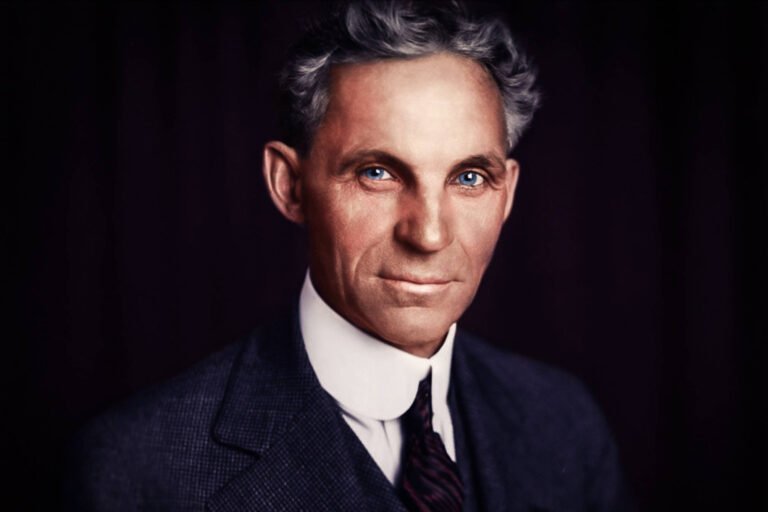
Was Henry Ford A Nazi? – Mythbusting Berlin
US auto tycoon, Henry Ford, holds the ignominious distinction of being the only American Adolf Hitler praised by name in his National Socialist manifesto: ‘Mein Kampf’. This was not, as it turns out, the only connection between Ford and the Party of Hitler, Himmler, and the Holocaust.
Ford’s overt affinity with the Third Reich reveals a troubling past. How deep these connections ran, and how consequential they were for both sides, is a chapter

Was The Colour Blue Invented In Berlin? – Mythbusting Berlin
Tracing the true history of blue—from ancient Egyptian dyes to the accidental discovery of Prussian Blue in a Berlin lab. We’ll debunk myths about seeing blue, explore colonial indigo plantations, scale mountains with a cyanometer, and trace Van Gogh’s starry skies—all to answer one question: how did Berlin shape our understanding of the world’s rarest color?

Was The Döner Kebab Invented In Berlin? – Mythbusting Berlin
Unlikely icon of immigrant success; fast food symbol of the working class; over-hyped midnight disco eat; or culturally appropriated cuisine? Its influence goes far beyond layers of seasoned meat and fresh vegetables stuffed into pita bread. But does Berlin deserve credit as the Döner Kebab’s true birthplace, or has the city merely refined and popularized a culinary tradition imported from elsewhere?

Was The Fall Of The Berlin Wall An Accident? – Mythbusting Berlin
On a seasonally crisp night in November 1989, one of the most astonishing events of the 20th century occurred. After twenty eight years, three months, and twenty eight days of defining and dividing the German capital, the Berlin Wall ceased to exist – at least in an abstract sense. Although the removal of this symbol of the failure of the East German system would take some time, its purpose – as a border fortification erected

Was The Nazi Party Democratically Elected? – Mythbusting Berlin
The myth persists that Adolf Hitler rose to power through popular democratic choice. Yet history reveals a darker, more complicated truth. Hitler’s ascent involved exploiting democratic institutions, orchestrating violence, propaganda, and political intrigue—not a simple election victory. Understanding how Germany’s democracy collapsed into dictatorship helps illuminate the dangerous interplay between public desperation, elite miscalculations, and extremist ambition, providing crucial lessons for safeguarding democracy today.
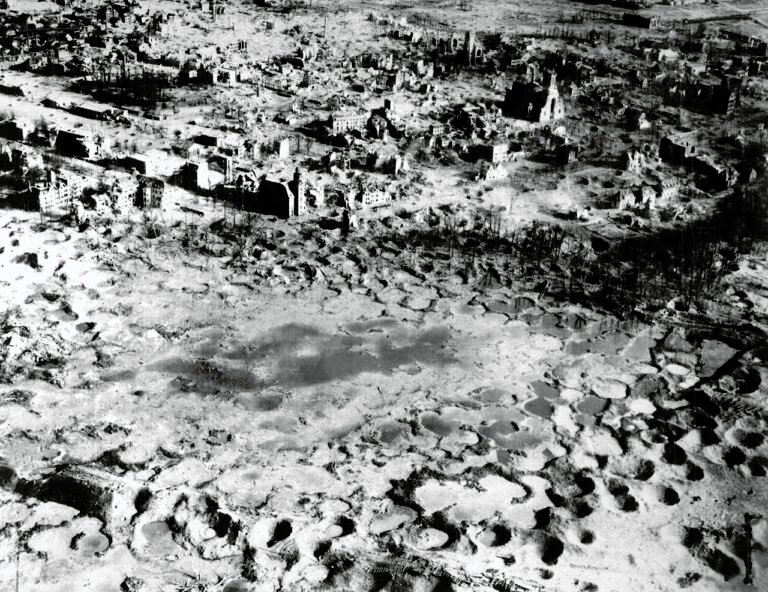
Were The Allied Bombings Of Germany War Crimes? – Mythbusting Berlin
The history of the Allied bombing of Germany during the Second World War still triggers fierce debate. Was reducing cities to rubble a necessary evil – justice from above in a just war – or an unforgivable crime? Can the intentional targeting of civilians ever be justified as militarily necessary?
In a conflict where all rules seemed to vanish, an even more pertinent question persists: by the very standards they would use to judge their

Were The Nazi Medical Experiments Useful? – Mythbusting Berlin
Before the Nazi period, German medicine was considered the envy of the world – a shining monument to progress. But deep within that monument, a rot was spreading, one which would collapse the entire structure into an abattoir. From the wreckage, we are left with a profoundly uncomfortable inheritance: a moral enigma wrapped in doctor’s whites.
What to make of the data, the images, and the terrible knowledge gleaned from unimaginable human suffering. Whether

What Are The Origins Of The Nazi Salute? – Mythbusting Berlin
A specter is haunting the modern mind, a gesture so charged with the dark electricity of history that its mere depiction can unleash a storm of controversy.
It is a simple movement: the right arm, stiff and straight, raised to the sky. But in that simplicity lies a terrifying power, a symbol of a regime that plunged the world into an abyss and a chilling reminder of humanity’s capacity for organised hatred.
This
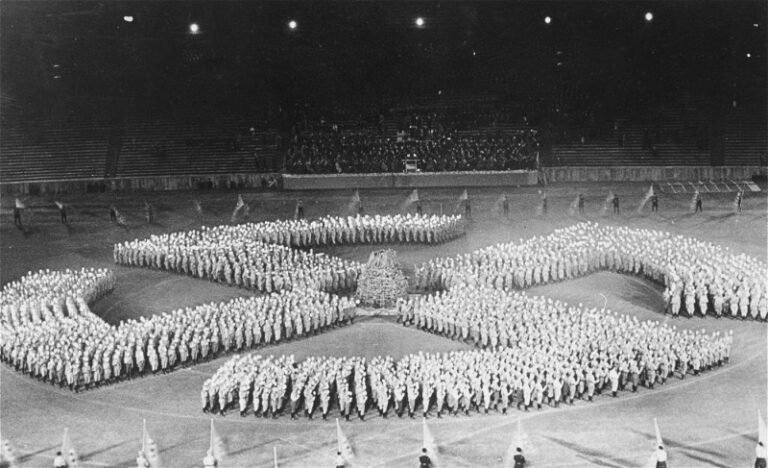
What Are The Origins Of The Nazi Swastika? – Mythbusting Berlin
Long before the legions of the Third Reich marched beneath its stark, unnerving geometry, the swastika lived a thousand different lives. It was a symbol of breathtaking antiquity, a globetrotting emblem of hope and good fortune that found a home in the most disparate of cultures. To even begin to understand its dark 20th-century incarnation, one must first journey back, not centuries, but millennia.

What Are The Pink Pipes In Berlin? – Mythbusting Berlin
A first-time visitor to Berlin could be forgiven for thinking the city is in the midst of a bizarre art installation. Bright pink pipes, thick as an elephant’s leg, climb out of the ground, snake over pavements, arch across roads, and disappear back into the earth. Are they part of a complex gas network? A postmodern artistic statement? A whimsical navigation system? These theories, all logical, are all wrong. The truth is far more elemental,
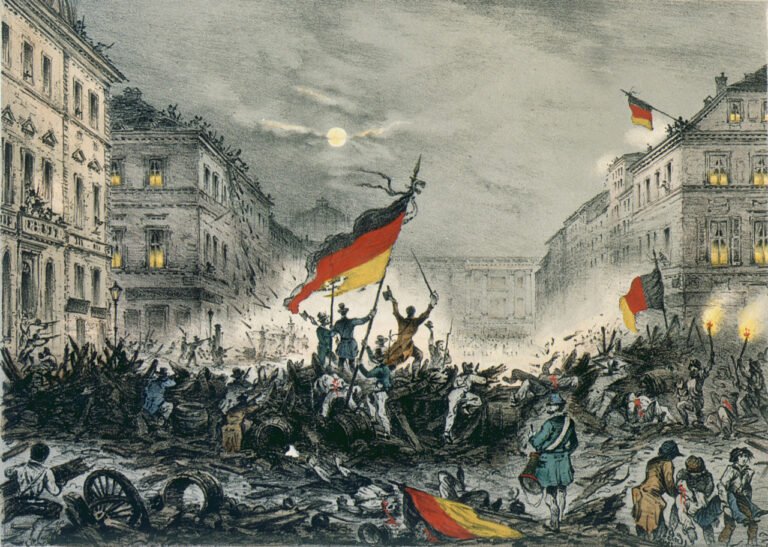
What Do The Colours Of The German Flag Symbolise? – Mythbusting Berlin
What does a flag mean? Is it merely a coloured cloth, or does it hold the hopes, struggles, and identity of a nation? The German flag, with its bold stripes of black, red, and gold, is instantly recognisable. But the story of its colours is a tumultuous journey through revolution, suppression, and reinvention. The common explanation for their symbolism is a simple, romantic verse, yet the truth is a far more complex and contested tale,

What Happened To Adolf Hitler’s Alligator? – Mythbusting Berlin
It is often said that you can tell a lot about a person by their relationship with animals; that owners often come to look and behave like their pets. Or is it perhaps more that people choose their pets to correspond to their personality? Nazi leader Adolf Hitler’s love of dogs, for example, is well documented but what is there to make of his relationship with reptiles?
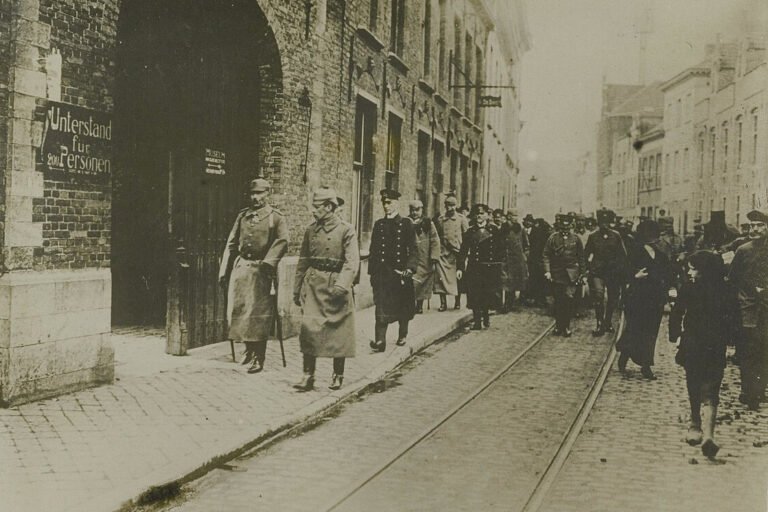
What Happenened To The German Royal Family? – Mythbusting Berlin
When the smoke cleared over the trenches in November 1918, the German Empire had evaporated, and with it, the divine right of the Hohenzollern dynasty. Conventional wisdom suggests the family simply vanished into the sepia-toned obscurity of history books—exiled, forgotten, and irrelevant. But dynasties, like weeds in a landscaped garden, are notoriously difficult to uproot entirely. The story of the German royals did not end with the Kaiser’s flight to Holland; it merely shifted gears.
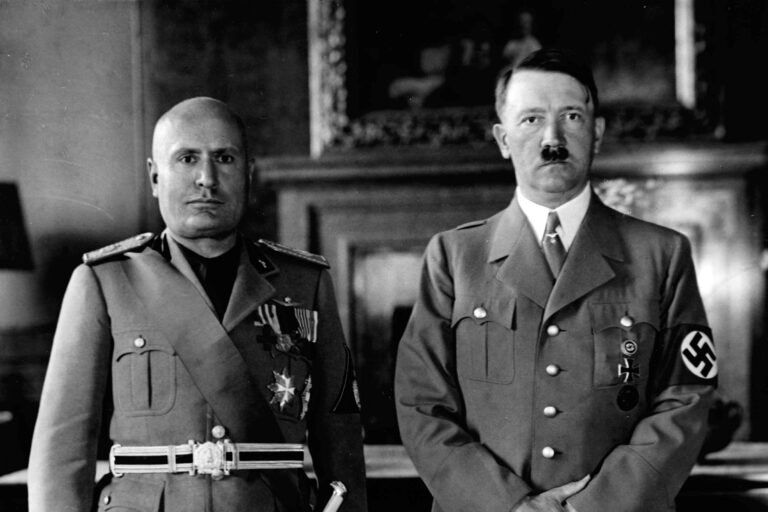
What Is The Difference Between Fascism & Nazism? – Mythbusting Berlin
While the terms ‘Fascist’ and ‘Nazi’ are often bandied around interchangeably as shorthand for tyranny – Italian fascism and German National Socialism were distinctly different beasts. Albeit ideological kin. One an ideology of state-worship, born from post-war chaos and national pride; the other built upon a fanatical, pseudo-scientific obsession with race. Two peas in the same totalitarian pod – twins in tyranny – more succinctly summarised as the Nazi chicken to the Fascist egg.

What Was Checkpoint Charlie? – Mythbusting Berlin
Checkpoint Charlie remains among Berlin’s most visited historical sites, famed worldwide for its significance during the Cold War. Originally established as a modest border-crossing point, it evolved dramatically over the decades into an international symbol of freedom, espionage, and intrigue. Today, critics and locals often dismiss it as little more than a tourist trap—Berlin’s Disneyland—but how exactly did Checkpoint Charlie get its peculiar name, and what truths hide behind its popularity?
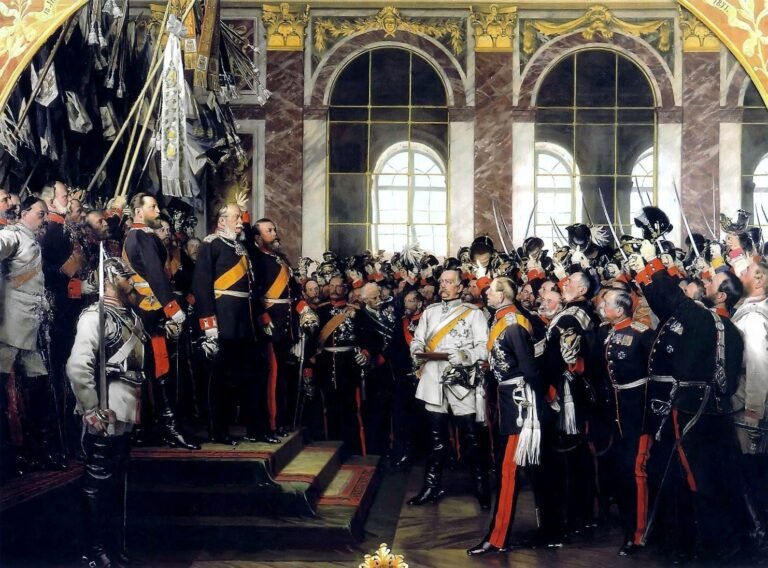
What Was Prussia? – Mythbusting Berlin
Prussia’s legacy is both remarkable and contentious—once a minor duchy, it rose dramatically to shape modern European history. Renowned for military discipline, administrative efficiency, and cultural sophistication, Prussia was instrumental in uniting the German states, laying foundations for a unified Germany. But how did this kingdom, with its roots in Baltic territories, achieve such prominence, and why does its complex history continue to evoke admiration, debate, and occasional discomfort in Germany today?
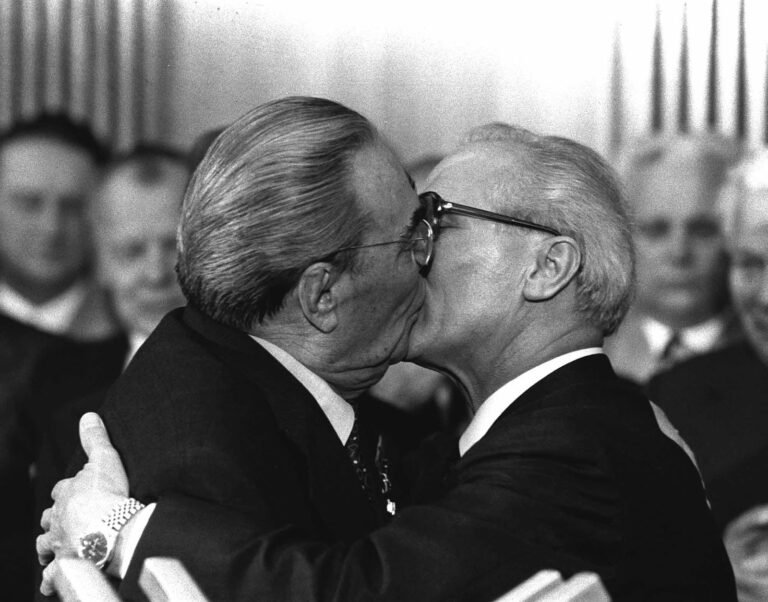
What Was The Socialist Kiss? – Mythbusting Berlin
It is one of the most curious and enduring images of the Cold War: two middle-aged, grey-suited men, locked in a fervent embrace, their lips pressed together in a kiss of apparent revolutionary passion. This was the ‘Socialist Fraternal Kiss’, a ritual that, for a time, seemed to encapsulate the unwavering solidarity of the Eastern Bloc.
But what was behind this seemingly intimate gesture? Was it a genuine expression of camaraderie, a piece of
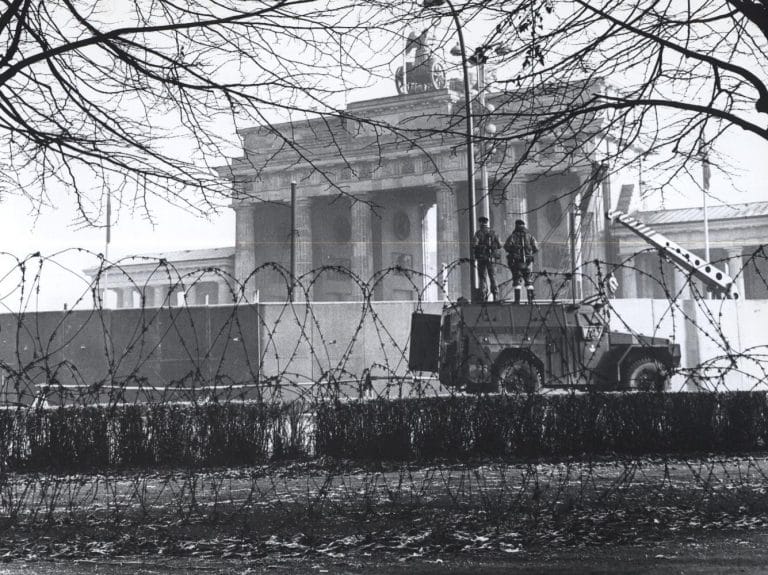
Who Built The Berlin Wall? – Mythbusting Berlin
One of the most common questions I have encountered from people curious about Berlin, and often so cryptically phrased. Who built the Berlin Wall? A simple five-word query, yet one that can be read one of two ways. More than thirty years since the ‘Fall of the Wall’, the story of its construction continues to baffle many who are mainly familiar with its existence through knowledge of its importance…
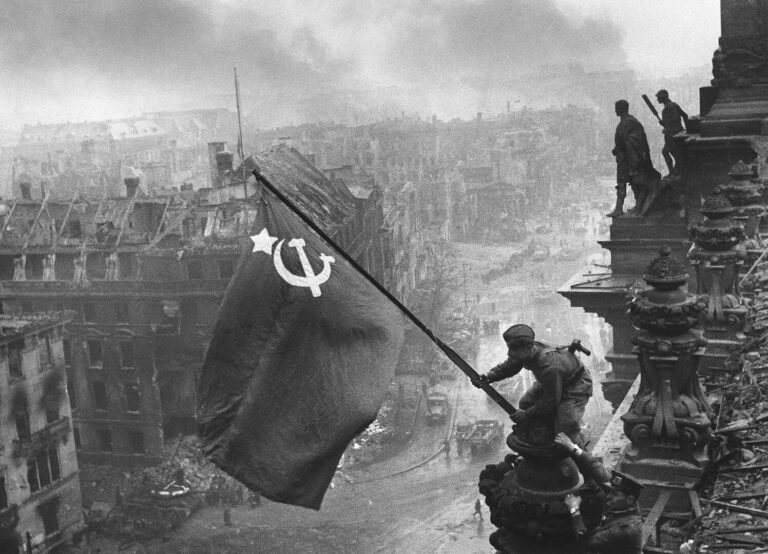
Who Really Raised The Soviet Flag On The Reichstag? – Mythbusting Berlin
One iconic photograph has come to symbolise the Red Army’s victory over Nazi Germany in 1945—the Soviet flag waving triumphantly above Berlin’s battered Reichstag building. Yet behind this enduring image lies controversy, confusion, and political manipulation. Who truly raised the Soviet banner atop the Reichstag? Was it a spontaneous act of heroism or carefully staged Soviet propaganda? Decades later, unraveling the truth reveals surprising layers beneath the mythologized symbol of Soviet triumph.
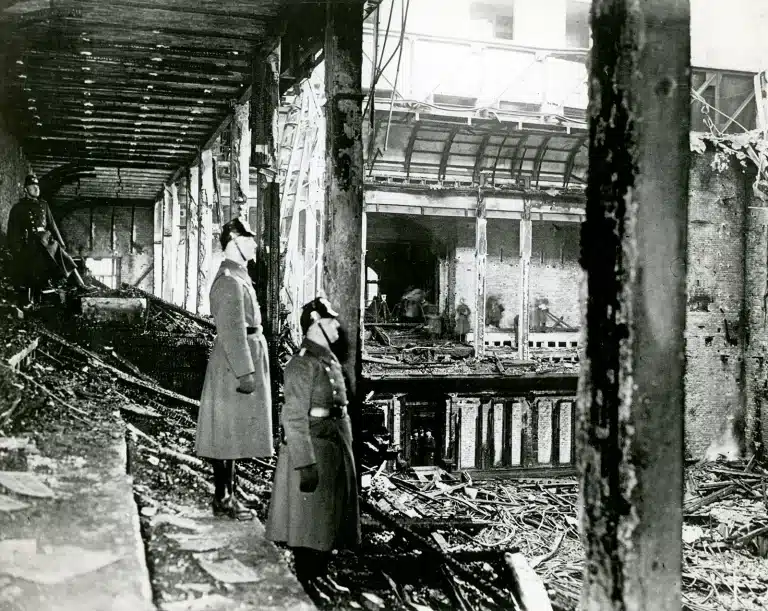
Who Was Really Responsible For The Reichstag Fire? – Mythbusting Berlin
Various theories have been posited as to who actually set fire to the German parliament in 1933. Was it the opening act in an attempted Communist coup or a calculated false flag operation carried out by elements of the Nazi Party, intended to create the conditions necessary for introducing single-party rule? And what part did the young man from Holland, arrested shirtless inside the building the night of the fire, play in this event?

Why Is Berlin The Capital Of Germany? – Mythbusting Berlin
There was little in its humble origins—as a twin trading outpost on a minor European river—to suggest that Berlin was destined for greatness. It sits on the flat expanse of the North European Plain, a landscape once dismissively referred to as the “sandbox of the Holy Roman Empire.” Unlike other world capitals, it lacks breathtaking scenery or a naturally defensible position. It is a city built not on majestic hills or a grand harbour, but



